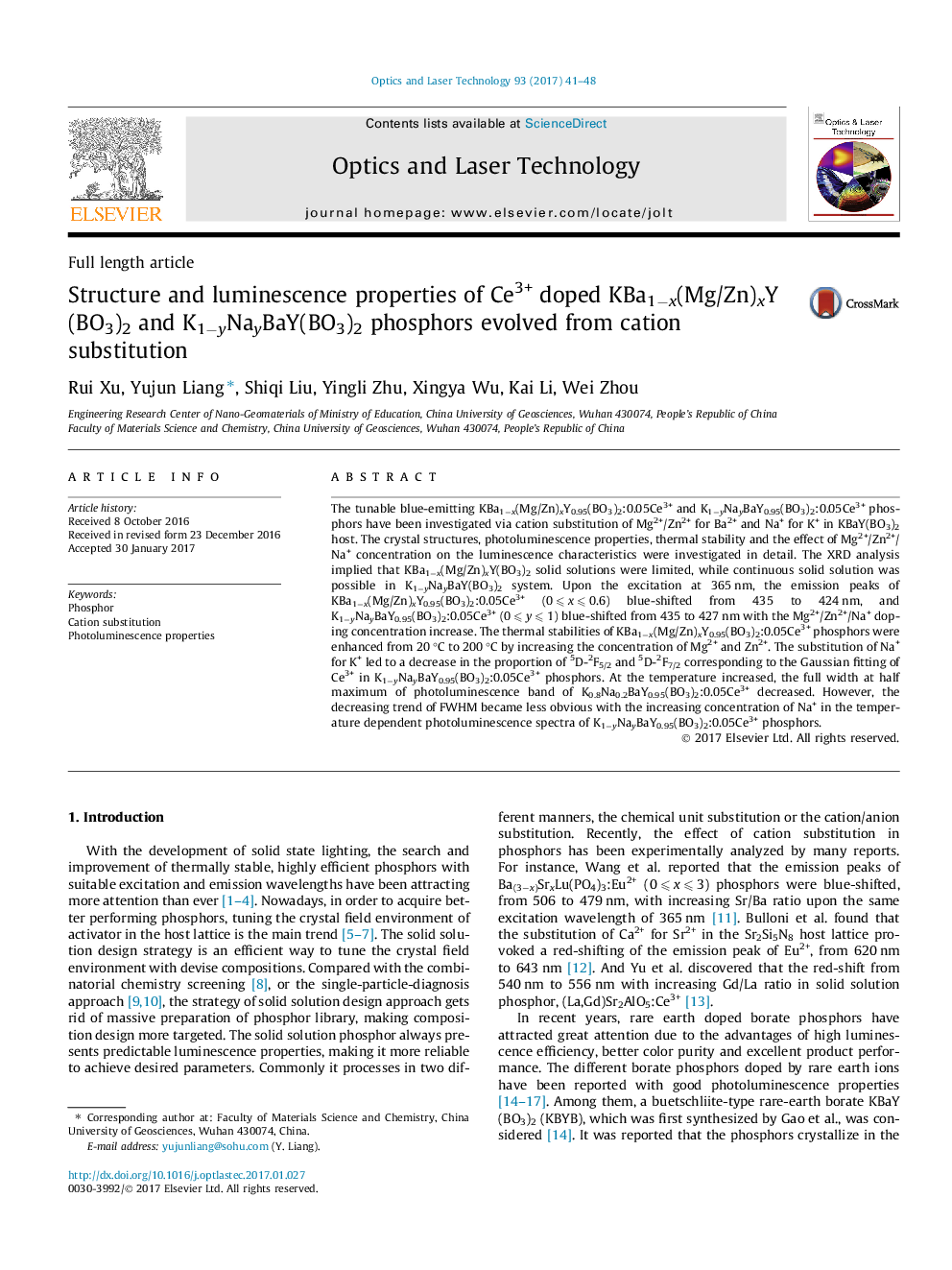| Article ID | Journal | Published Year | Pages | File Type |
|---|---|---|---|---|
| 5007550 | Optics & Laser Technology | 2017 | 8 Pages |
Abstract
The tunable blue-emitting KBa1âx(Mg/Zn)xY0.95(BO3)2:0.05Ce3+ and K1âyNayBaY0.95(BO3)2:0.05Ce3+ phosphors have been investigated via cation substitution of Mg2+/Zn2+ for Ba2+ and Na+ for K+ in KBaY(BO3)2 host. The crystal structures, photoluminescence properties, thermal stability and the effect of Mg2+/Zn2+/Na+ concentration on the luminescence characteristics were investigated in detail. The XRD analysis implied that KBa1âx(Mg/Zn)xY(BO3)2 solid solutions were limited, while continuous solid solution was possible in K1âyNayBaY(BO3)2 system. Upon the excitation at 365 nm, the emission peaks of KBa1âx(Mg/Zn)xY0.95(BO3)2:0.05Ce3+ (0 ⩽ x ⩽ 0.6) blue-shifted from 435 to 424 nm, and K1âyNayBaY0.95(BO3)2:0.05Ce3+ (0 ⩽ y ⩽ 1) blue-shifted from 435 to 427 nm with the Mg2+/Zn2+/Na+ doping concentration increase. The thermal stabilities of KBa1âx(Mg/Zn)xY0.95(BO3)2:0.05Ce3+ phosphors were enhanced from 20 °C to 200 °C by increasing the concentration of Mg2+ and Zn2+. The substitution of Na+ for K+ led to a decrease in the proportion of 5D-2F5/2 and 5D-2F7/2 corresponding to the Gaussian fitting of Ce3+ in K1âyNayBaY0.95(BO3)2:0.05Ce3+ phosphors. At the temperature increased, the full width at half maximum of photoluminescence band of K0.8Na0.2BaY0.95(BO3)2:0.05Ce3+ decreased. However, the decreasing trend of FWHM became less obvious with the increasing concentration of Na+ in the temperature dependent photoluminescence spectra of K1âyNayBaY0.95(BO3)2:0.05Ce3+ phosphors.
Related Topics
Physical Sciences and Engineering
Engineering
Electrical and Electronic Engineering
Authors
Rui Xu, Yujun Liang, Shiqi Liu, Yingli Zhu, Xingya Wu, Kai Li, Wei Zhou,
